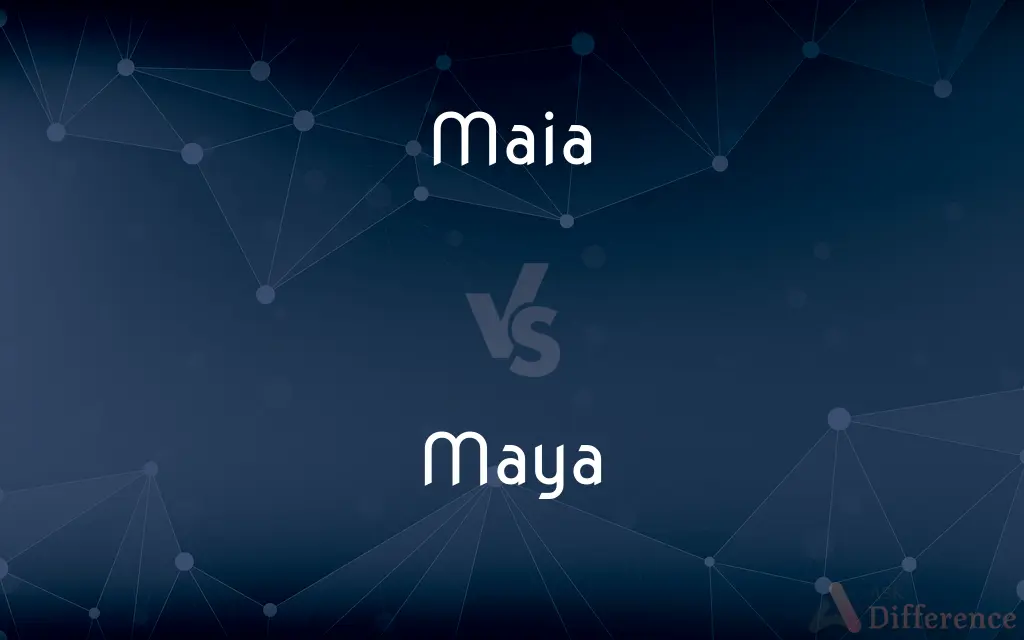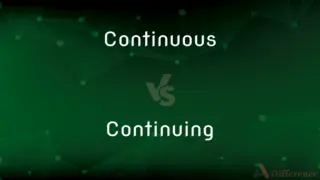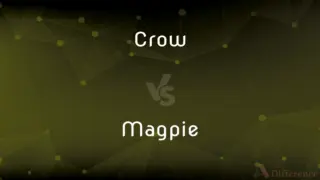Maia vs. Maya — What's the Difference?

Difference Between Maia and Maya
ADVERTISEMENT
Compare with Definitions
Maia
Maia (; Ancient Greek: Μαῖα; Latin: Maia), in ancient Greek religion, is one of the Pleiades and the mother of Hermes by Zeus.Maia is the daughter of Atlas and Pleione the Oceanid, and is the oldest of the seven Pleiades. They were born on Mount Cyllene in Arcadia, and are sometimes called mountain nymphs, oreads; Simonides of Ceos sang of "mountain Maia" (Maiados oureias) "of the lovely black eyes." Because they were daughters of Atlas, they were also called the Atlantides.
Maya
A member of a Mesoamerican Indian people inhabiting southeast Mexico, Guatemala, and Belize, whose civilization reached its height around AD 300-900. The Maya are noted for their architecture and city planning, their mathematics and calendar, and their hieroglyphic writing system.
Maia
Greek Mythology A goddess, the eldest of the Pleiades.
Maya
A modern-day descendant of this people.
Maia
The brightest star in the Pleiades.
ADVERTISEMENT
Maya
Any of the Mayan languages, especially Quiché and Yucatec.
Maia
A genus of spider crabs, including the common European species (Maia squinado).
Maya
In Hinduism, Buddhism, and certain other East Asian religions, the transitory, manifold appearance of the sensible world, which obscures the undifferentiated spiritual reality from which it originates; the illusory appearance of the sensible world.
Maia
Type genus of the Majidae; nearly cosmopolitan in distribution
Maya
(Hinduism) The power of a god or demon to transform a concept into an element of the sensible world.
Maya
Magic; supernatural power as held by the gods.
Maya
The power by which the universe is made to appear; the illusion of the phenomenal world, as opposed to its true or spiritual reality.
Maya
The name (in Vedantic philosphy) for the doctrine of the unreality of matter, called, in English, idealism; hence, nothingness; vanity; illusion.
Maya
The Hindu goddess personifying the power that creates phenomena.
Maya
The power to produce illusions.
Maya
The Indian people occupying the area of Veracruz, Chiapas, Tabasco, Campeche, and Yucatan, together with a part of Guatemala and a part of Salvador. The Maya peoples are dark, short, and brachycephalic, and at the time of the discovery had attained a higher grade of culture than any other American people. They cultivated a variety of crops, were expert in the manufacture and dyeing of cotton fabrics, used cacao as a medium of exchange, and were workers of gold, silver, and copper. Their architecture comprised elaborately carved temples and palaces, and they possessed a superior calendar, and a developed system of hieroglyphic writing, with records said to go back to about 700 a. d.
Maya
The language of the Mayas.
Maya
A member of an American Indian people of Yucatan and Belize and Guatemala who had a culture (which reached its peak between AD 300 and 900) characterized by outstanding architecture and pottery and astronomy;
Mayans had a system of writing and an accurate calendar
Maya
An ethnic minority speaking Mayan languages and living in Yucatan and adjacent areas
Maya
A family of American Indian languages spoken by Mayan peoples
Share Your Discovery

Previous Comparison
Continuous vs. Continuing
Next Comparison
Crow vs. Magpie














































